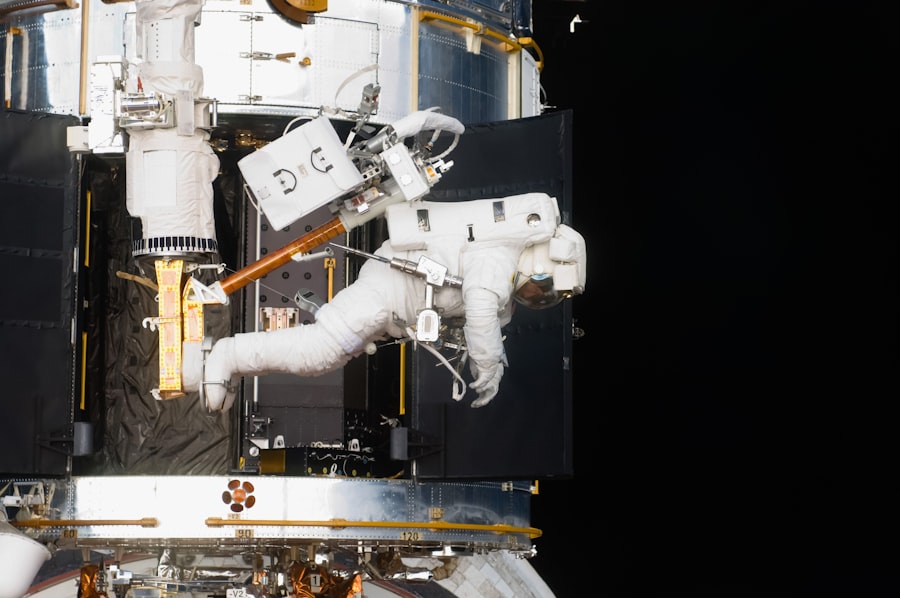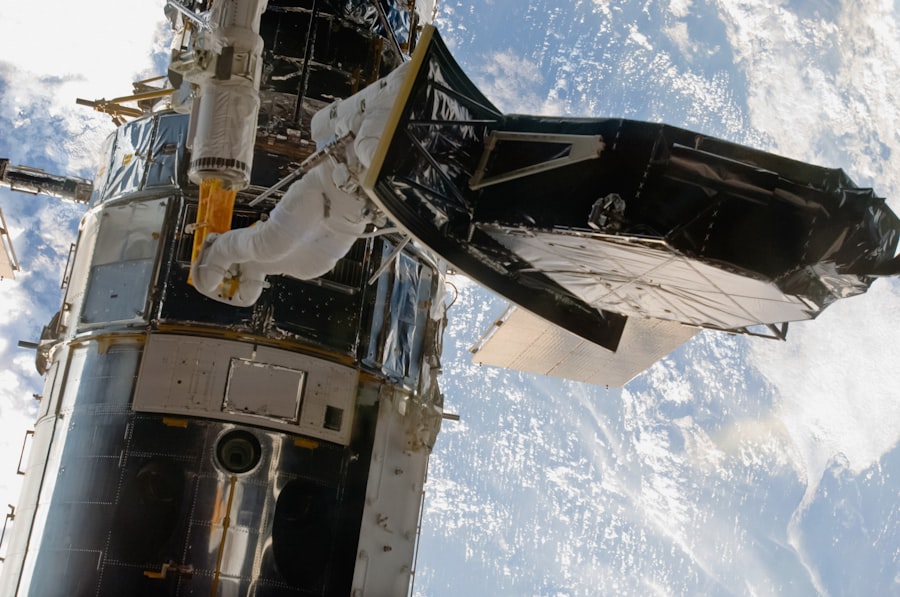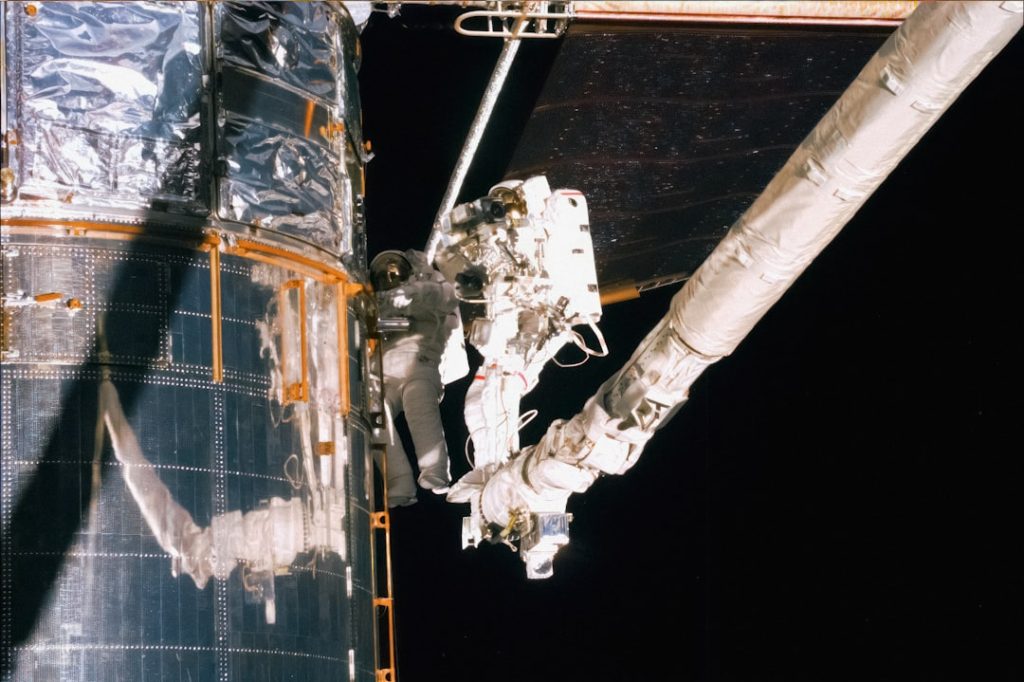The Hubble Space Telescope (HST) has become one of the most iconic instruments in the history of astronomy, revolutionizing our understanding of the universe since its inception. The concept for a space-based telescope was first proposed in the 1940s, but it wasn’t until the 1970s that serious plans began to take shape. The idea was to place a telescope above Earth’s atmosphere, where it could avoid the distortions caused by atmospheric turbulence and light pollution.
This vision was championed by astronomer Lyman Spitzer, who argued that a space telescope would provide unprecedented clarity and detail in astronomical observations. In 1977, NASA officially began the development of Hubble, with a collaborative effort involving the European Space Agency (ESA). The telescope was designed to be a versatile instrument capable of observing a wide range of celestial phenomena across various wavelengths, including ultraviolet, visible, and near-infrared light.
After years of design, construction, and testing, Hubble was finally launched aboard the Space Shuttle Discovery on April 24, 1990. The mission marked a significant milestone in space exploration and astronomy, as it was the first major observatory to be placed in orbit around Earth.
Key Takeaways
- The Hubble Space Telescope was launched in 1990 and has revolutionized our understanding of the universe.
- Hubble’s discoveries have had a profound impact on our understanding of the cosmos, including the age of the universe and the existence of dark energy.
- The telescope has faced numerous challenges and required several repairs, including a famous servicing mission in 2009.
- Hubble has played a crucial role in advancing our knowledge of the universe, from studying distant galaxies to observing exoplanets.
- The Hubble mission has left a lasting legacy, inspiring future space exploration and continuing to contribute to astronomy and astrophysics.
The Launch and Deployment of Hubble
The launch of Hubble was a momentous occasion, not only for NASA but for the global scientific community. The Space Shuttle Discovery lifted off from Kennedy Space Center in Florida, carrying with it the hopes and expectations of astronomers worldwide. Once in orbit, Hubble was deployed at an altitude of approximately 547 kilometers (about 340 miles) above Earth.
This position allowed it to avoid atmospheric interference and provided a clear view of the cosmos. Upon deployment, Hubble’s initial images were met with excitement; however, it soon became apparent that there were significant issues with its primary mirror. A spherical aberration caused by a manufacturing error meant that images were blurred, leading to widespread disappointment among scientists and the public alike.
This setback prompted an urgent need for corrective measures, which would ultimately lead to a series of servicing missions aimed at restoring Hubble’s intended capabilities.
The Impact of Hubble’s Discoveries

Despite its rocky start, Hubble quickly became a powerful tool for astronomical research. Its ability to capture high-resolution images allowed scientists to explore distant galaxies, nebulae, and other celestial objects with unprecedented detail. One of Hubble’s most significant contributions was its role in determining the rate of expansion of the universe.
By observing distant supernovae and measuring their brightness, astronomers were able to infer that the universe is not only expanding but that this expansion is accelerating due to a mysterious force known as dark energy. Hubble’s observations have also provided insights into the formation and evolution of galaxies. The telescope has captured stunning images of interacting galaxies, revealing the complex processes that govern their development over billions of years.
For instance, the famous “Hubble Deep Field” image, taken in 1995, showcased thousands of galaxies in a tiny patch of sky, demonstrating that the universe is far more vast and populated than previously imagined. This groundbreaking image has become emblematic of Hubble’s ability to push the boundaries of our understanding.
The Challenges and Repairs of the Hubble Telescope
| Challenges | Repairs |
|---|---|
| Gyroscopes failing | Replaced gyroscopes during servicing missions |
| Optical problem with main mirror | Installed Corrective Optics Space Telescope Axial Replacement (COSTAR) |
| Power system failure | Replaced solar arrays and power control unit |
| Computer glitches | Installed new main computer during servicing missions |
Hubble’s journey has not been without its challenges. The initial discovery of the mirror flaw necessitated a series of servicing missions conducted by astronauts aboard the Space Shuttle. The first servicing mission took place in December 1993 and involved the installation of corrective optics known as the Corrective Optics Space Telescope Axial Replacement (COSTAR).
This innovative solution allowed Hubble to produce sharp images while engineers worked on a more permanent fix. Subsequent servicing missions further enhanced Hubble’s capabilities. Over the years, astronauts replaced aging instruments, upgraded systems, and performed critical maintenance tasks.
For example, during Servicing Mission 4 in 2009, astronauts installed new instruments such as the Wide Field Camera 3 and the Cosmic Origins Spectrograph. These upgrades significantly expanded Hubble’s observational capabilities and ensured its continued relevance in modern astronomy.
Hubble’s Role in Understanding the Universe
Hubble has played a pivotal role in advancing our understanding of fundamental questions about the universe. One of its most profound contributions has been in the study of exoplanets—planets orbiting stars outside our solar system. By analyzing the light from distant stars as it passes through an exoplanet’s atmosphere during transits, Hubble has provided valuable data on the composition and characteristics of these distant worlds.
Additionally, Hubble has contributed to our understanding of black holes and their formation. Observations of supermassive black holes at the centers of galaxies have revealed their influence on galaxy dynamics and evolution. For instance, studies conducted using Hubble data have shown a correlation between the mass of supermassive black holes and the properties of their host galaxies, suggesting a complex relationship between these enigmatic objects.
The Legacy of the Hubble Mission

The legacy of the Hubble Space Telescope is profound and multifaceted. It has not only transformed our understanding of astrophysics but has also inspired generations of scientists and enthusiasts alike. The stunning images produced by Hubble have captivated the public imagination, fostering a sense of wonder about the cosmos and our place within it.
These images have been featured in countless publications, documentaries, and educational materials, making complex astronomical concepts accessible to a broader audience. Moreover, Hubble’s success has paved the way for future space observatories. Its design and operational principles have informed subsequent missions such as the James Webb Space Telescope (JWST), which aims to explore even deeper into the infrared spectrum.
The collaborative spirit fostered by Hubble’s international partnerships has also set a precedent for future scientific endeavors in space exploration.
Hubble’s Contributions to Astronomy and Astrophysics
Hubble’s contributions extend beyond individual discoveries; it has fundamentally altered our approach to astronomy and astrophysics. The telescope has provided critical data for numerous scientific papers and research projects across various fields. For example, its observations have been instrumental in refining models of galaxy formation and evolution, shedding light on how galaxies interact over cosmic timescales.
Furthermore, Hubble has played a crucial role in advancing our understanding of cosmic phenomena such as gamma-ray bursts and gravitational lensing. By observing these events from its unique vantage point above Earth’s atmosphere, Hubble has provided insights into some of the most energetic processes in the universe. Its ability to capture transient events has opened new avenues for research and collaboration among astronomers worldwide.
The Future of Hubble and Space Exploration
As we look toward the future, Hubble continues to be an invaluable asset for astronomers while also serving as a bridge to new explorations beyond its capabilities. Although it is now over three decades old, ongoing maintenance efforts have ensured that it remains operational and relevant in an era marked by rapid advancements in technology. However, as newer telescopes like JWST prepare for their own missions, questions arise about how Hubble will fit into this evolving landscape.
The future of space exploration is bright, with plans for even more ambitious missions on the horizon. While Hubble will eventually be succeeded by next-generation observatories capable of probing deeper into cosmic history, its legacy will endure through its contributions to science and public engagement with astronomy. As we continue to explore the universe beyond our own solar system, Hubble will remain a symbol of human curiosity and ingenuity—a testament to what can be achieved when we look up at the stars with wonder and determination.


